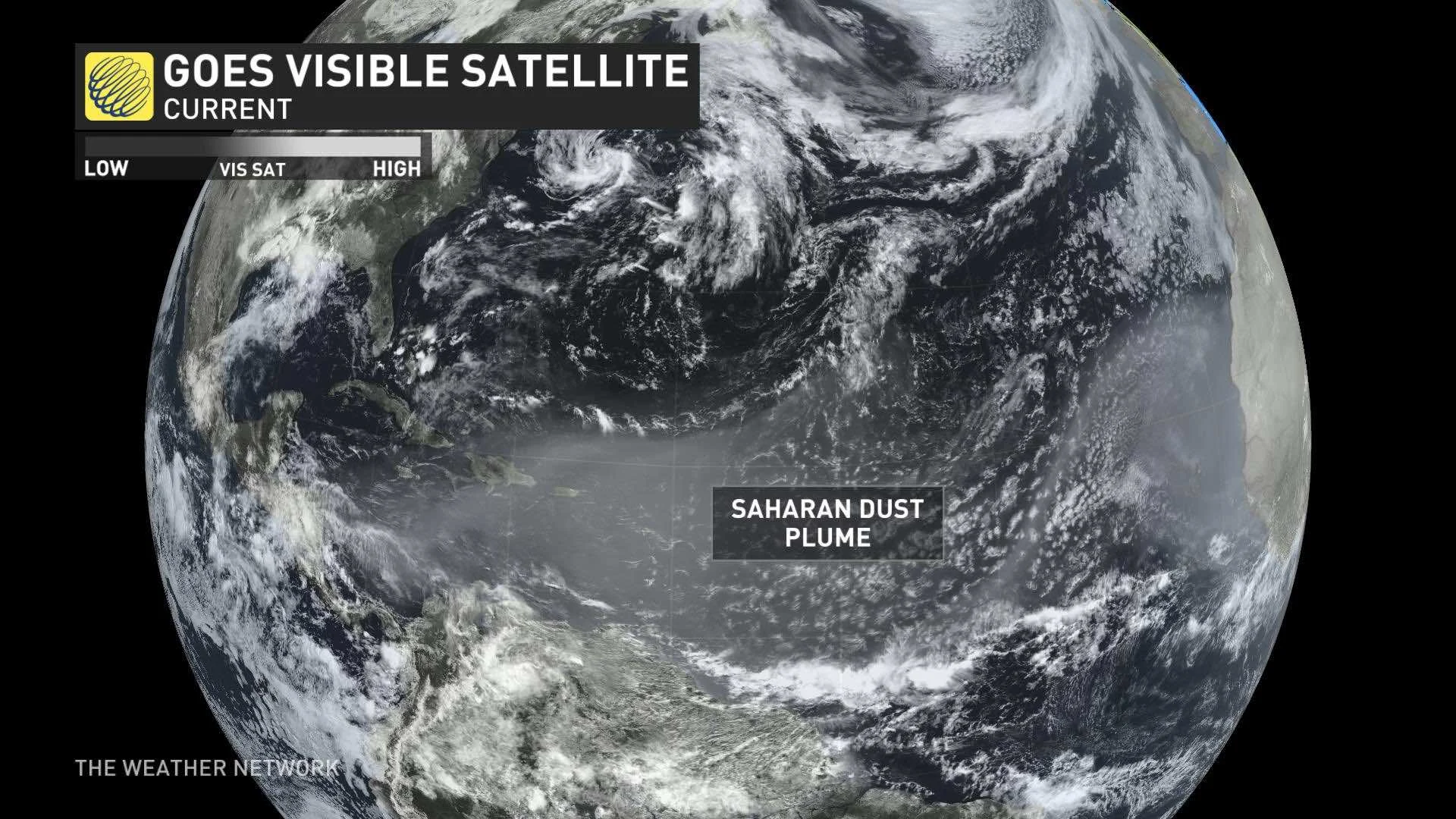
Sahara dust blankets Caribbean skies with hazardous 'Godzilla' cloud
The Sahara dust reached the Caribbean on the weekend, blanketing the skies with a smoky plume that has led to harmful air quality levels.
Health experts in the Caribbean are warning residents to stay indoors to avoid potentially dangerous impacts from a Saharan plume that some are calling a "Godzilla dust cloud," due to its potency and size.
The dust, known as the Saharan Air Layer (SAL), normally forms and occurs from late spring through early fall and then moves into the tropical Atlantic Ocean every three to five days, according to NOAA's Hurricane Research Division (HRD).
This year's dry plume, which hit the Caribbean on the weekend, has dropped air quality across most of the region to dangerous record evels, with experts advising people to stay indoors and use air filters if they have them.

Many specialists in the Caribbean are particularly concerned about those with respiratory symptoms, but even healthy people are at risk. Pablo Méndez Lázaro, an environmental health specialist with the University of Puerto Rico, told Fox 29 that the concentration of dust has been so high in recent days that it poses a risk for people with no health concerns.
“This is the most significant event in the past 50 years,” said Lázaro. “Conditions are dangerous in many Caribbean islands.”
The plume is expected to reach the Gulf of Mexico and southeastern United States by Wednesday, according to the latest forecast models.
CARIBBEAN SKIES COVERED IN DUST, POOR VISIBILITY
Hazy conditions and poor visibility have been reported, from Antigua to Trinidad and Tobago, with the plume expected to linger until late Tuesday, with an improvement in the skies by Thursday.
As the dust cloud filled the skies, it didn’t take long for visuals of the occurrence to blanket social media. The dust is also known to illuminate sunrises and sunsets with a redish tint. Below is a selection of images posted online so far.
MOVES NEARLY 8,100-KM WEST EVERY YEAR
The Saharan dust travels as far west as the Caribbean Sea, Florida and the Gulf of Mexico each year – a nearly 8,100-kilometre trek. The plume particles can cause hazy skies at times and generate toxic algal blooms in the Gulf of Mexico, according to NASA.
According to the HRD, the Saharan Air Layer is usually situated at heights of 5,000 to 20,000 feet above the Earth's surface and is pushed westward by strong wind gusts and tropical waves in the central and western Atlantic Ocean, at altitudes ranging between 6,500 and 14,500 feet.
DUST EXPOSURE CAN LEAD TO DEATHS, RESPIRATORY, EYE PROBLEMS
Mounting evidence, including a study published in the National Library of Medicine,has indicated that mineral dust found in particulate matter may contribute to serious health impacts including an increase in deaths. Approximately half of atmospheric mineral dust originates from the Sahara Desert.
As well, those with respiratory ailments such as asthma and sinusitis could be impacted, as irritation of the eyes, nose and throat are possible impacts from the dust exposure.
HURRICANE DEVELOPMENT HALTED?
Because of its occurrence during hurricane season, the National Oceanic and Atmospheric Administration (NOAA) has outlined several potential impacts of SAL to tropical development.
However, this early in the hurricane season is typically quiet in the tropical Atlantic, but an outbreak of dust, combined with adverse upper-level winds, could restrict any significant tropical development in the short-term future.
Sources: Weather Underground | CNN | National Library of Medicine | Fox 29










